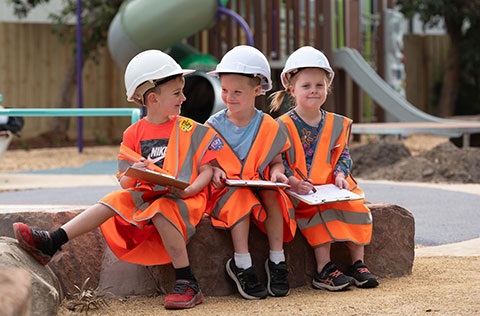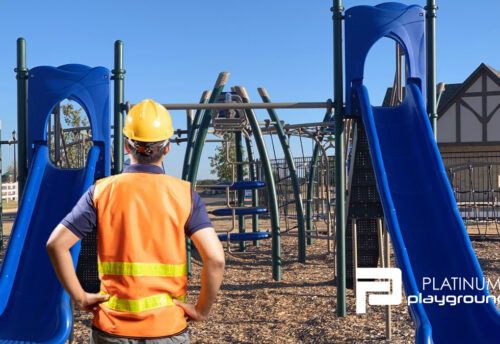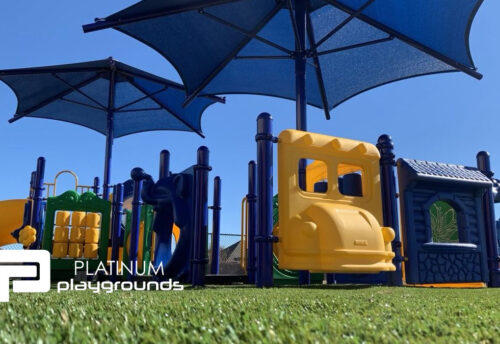The Importance of Regular Playground Inspections: Keeping Play Safe and Fun
Playgrounds are every kid’s paradise—a place where they can climb, swing, and slide to their heart’s content. But behind the scenes of every well-loved playground is a diligent routine of inspections to keep that paradise safe. Playground equipment may seem durable (and it is!), but it still requires regular checkups to ensure every swing, slide, and climber is in tip-top shape.
Whether you’re a school administrator, community leader, or park manager, routine inspections are your best defense against accidents, wear-and-tear, and liability headaches. Let’s dive into the essentials of a playground inspection: what needs checking, how often, and when it’s time to call in the pros.

Why Routine Playground Inspections Matter
Think of it this way: playground equipment is like any other piece of machinery—it’s built to last but needs a little TLC now and then. Regular inspections by Platinum Playgrounds help catch minor issues before they turn into big problems, making it safer for kids and easier on maintenance budgets.
Here’s what a good playground inspection program can do for you:
- Identify Early Wear and Tear: Kids can be surprisingly hard on equipment (who knew?), so it’s essential to keep an eye out for loose bolts, rust spots, and frayed ropes.
- Prevent Accidents: Inspections help catch potential hazards, like sharp edges or broken parts, before they lead to accidents.
- Reduce Liability: Staying on top of inspections means fewer surprise issues and a better record of maintenance—good news for you and your insurance!
- Extend Equipment Life: Proper care and timely repairs mean you get the most out of your playground investment, keeping equipment safe and fun for years to come.
Learn more about “Ensuring Playground Safety“.
Key Playground Inspection Tips: What to Check
When inspecting a playground, a checklist is your best friend. Start by organizing your inspection into these key areas:
1. Surfaces and Fall Zones
- Check surfacing material: Whether it’s rubber mulch, wood chips, or sand, make sure it’s still soft, evenly spread, and thick enough to cushion falls.
- Ensure even coverage: Look out for bald spots, particularly under swings and at the base of slides, where material tends to get kicked away.
- Fall height compliance: The depth of surfacing should be appropriate for the height of the equipment, especially under taller structures like climbing frames and slides.
2. Equipment Structure and Stability
- Tighten fasteners: Screws, bolts, and other connectors should be secure and free of rust. Loose hardware can lead to wobbly structures or, worse, unexpected breaks.
- Check joints and welds: Look for cracks, rust, or deterioration in welds and joints. These areas bear a lot of stress, so they’re prone to wear over time.
- Inspect structural integrity: Climbing structures and play towers should feel solid. If anything seems wobbly or loose, it’s time to investigate further.
3. Play Components (Slides, Swings, Climbing Features)
- Inspect slides and swing seats: Look for cracks, rust, and sharp edges. Plastic slides should be free of cracks, and metal components should be free of rust.
- Check chains and ropes: Look for fraying on ropes and wear on chains. Swings are high-use items, so they tend to wear out more quickly.
- Moving parts: Any part that moves—like swing chains or merry-go-round bearings—should operate smoothly and without squeaking, grinding, or sticking.
4. Edges and Surfaces for Smoothness
- Smooth edges and surfaces: Feel around for sharp or rough edges. Kids will find those jagged spots faster than you can say “playground safety,” so make sure everything is smooth and rounded.
- Inspect for splinters or chipped paint: Wooden equipment should be sanded if splinters appear, and metal or plastic surfaces should be free of chipped paint or broken parts.
5. Clear Sightlines
- Remove obstructions: Trim bushes and make sure sightlines remain open. This allows for clear supervision and a safer play experience.
Download the International City/County Management Association (ICMA) Checklist for Playground Safety
Scheduling Playground Inspections
Establishing a regular inspection schedule is key to keeping playgrounds safe and up to code. Here’s a simple guide for planning inspection frequency:
- Daily or Weekly Checks: For high-traffic areas, a quick daily or weekly once-over can help spot obvious issues, like a missing bolt or kicked-out mulch. Keep it short and simple: a quick walkaround to note anything amiss.
- Monthly Checks: A monthly inspection should cover a more thorough checklist, looking closely at all major components, surfacing conditions, and hardware. Documenting these monthly checks helps maintain a good record for future reference.
- Seasonal or Quarterly Inspections: These are your “deep dives,” where you go through each aspect of the playground with a fine-toothed comb. Changes in weather can be hard on equipment, so seasonal checks can help you stay ahead of wear caused by temperature shifts, snow, rain, or UV exposure.
- Annual Professional Inspections: Once a year, consider bringing in a professional for a comprehensive inspection. They have specialized tools, a trained eye, and the expertise to catch subtle issues that might be missed in routine checks.
“Top Playground Safety Features to Consider: Keeping Fun Safe for Everyone“
Calling in the Pros: When to Seek Professional Assessment
While regular inspections are crucial, there are times when a professional touch is the best option. For example:
- Major Repairs or Renovations: If you notice significant structural issues, it’s best to call in a professional who can assess and fix the problem safely.
- Post-Accident Assessments: In the unfortunate event of an accident, an expert inspection can help identify any risks or damages that might need immediate attention.
- End of Warranty Periods: If the warranty on a particular piece of equipment is about to expire, a professional inspection can ensure it’s still in good shape before you’re responsible for repairs.
Essential Playground Inspection Tools
For thorough inspections, having the right tools on hand can make the process easier and more effective. Here’s a quick toolkit:
- Wrench Set: For tightening loose bolts and nuts.
- Safety Gloves: Protects your hands from sharp edges or rough spots.
- Inspection Checklist: Whether on paper or a digital checklist app, tracking your observations keeps things organized and on record.
- Camera: Take photos of any areas that need repair, which is helpful for maintenance and tracking issues over time.
Keeping Play Safe, One Inspection at a Time

When it comes to playground safety, inspections are your first line of defense. They might feel routine, but each check, tweak, and repair is a step toward a safer playground experience for all. And while maintenance may seem like an endless cycle, these inspections are the best way to ensure every child (and parent!) has a safe, worry-free playtime.
Platinum Playgrounds understands the importance of safety and regular maintenance. We’re here to support your playground with top-quality equipment, industry insights, and maintenance tips to keep your playground fun and safe for years to come. So, whether you need advice on playground safety or are ready to upgrade your equipment, contact us to help make playtime as safe and enjoyable as possible.

